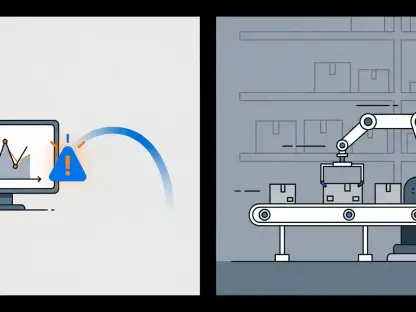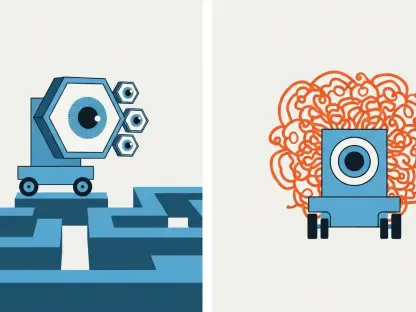In the fast-paced world of healthcare, where time is often a scarce commodity, artificial intelligence (AI) is emerging as a potential game-changer for New Zealand’s primary care system, promising to alleviate the burden of documentation. A pioneering study from the University of Otago, Wellington, recently published in the Journal of Primary Health Care, sheds light on how AI-driven scribes are being integrated by general practitioners (GPs) and other healthcare professionals to transcribe patient consultations in real time. With the promise of reducing the heavy burden of clinical documentation, these tools are sparking both excitement and skepticism. The research, surveying 197 healthcare workers including GPs, nurses, and rural emergency providers, reveals a significant trend: 40% have already adopted AI scribes. Yet, as the technology gains traction, it brings with it a host of challenges and questions about efficiency, ethics, and cultural sensitivity that demand closer examination.
The Potential of Digital Innovation
Rapid Adoption Among Clinicians
The embrace of AI scribes by a substantial portion of New Zealand’s primary care workforce signals a deep-seated need for solutions to administrative overload. According to the survey, 40% of the 197 healthcare professionals have incorporated these tools into their practice as of early data collection periods. This swift uptake reflects a broader trend of digital transformation in healthcare, driven by the desire to reclaim time for direct patient interaction. The promise of shaving off anywhere from 30 minutes to two hours of documentation time each day is a compelling draw for clinicians who often find themselves bogged down by paperwork. This shift could potentially redefine daily workflows, allowing more focus on the human element of care rather than the clerical demands that have long plagued the profession. However, the enthusiasm for adoption must be tempered by a clear understanding of whether the technology delivers on its promises in real-world settings.
Balancing Hopes with Realities
While the adoption rate of AI scribes is impressive, the reality of their impact on daily practice tells a more nuanced story. Many healthcare professionals are drawn to the idea of streamlining their workload, envisioning a future where patient care takes precedence over endless note-taking. Yet, the initial excitement often gives way to frustration when the technology falls short of expectations. Reports indicate that while time savings are possible, they are not guaranteed, as the tools require significant oversight to ensure accuracy. This dichotomy between the potential of AI to revolutionize primary care and the practical hurdles it faces highlights a critical juncture for the technology. Stakeholders must weigh the benefits of reduced administrative tasks against the current limitations, ensuring that the push for innovation does not outpace the need for reliability and trust in clinical settings.
Navigating the Challenges of Implementation
Accuracy and Linguistic Shortcomings
One of the most pressing issues with AI scribes in New Zealand’s primary care landscape is their inconsistent accuracy, which often undermines the very efficiency they aim to provide. Clinicians frequently encounter errors, omissions, and even “hallucinations”—instances where the AI generates plausible but entirely incorrect information. These flaws necessitate extensive editing and review, which can negate much of the anticipated time savings. The technology’s struggle to adapt to the unique linguistic diversity of the region, including New Zealand accents and te reo Māori, further complicates its utility. For a healthcare system that prides itself on inclusivity, this limitation poses a risk of alienating patients from diverse backgrounds who expect their cultural and linguistic identities to be respected. Addressing these technical shortcomings is essential if AI scribes are to become a reliable tool across varied clinical environments.
Cultural and Practical Barriers
Beyond technical inaccuracies, the implementation of AI scribes faces significant cultural and practical barriers that cannot be overlooked. The inability of current systems to fully accommodate te reo Māori raises concerns about equitable access to healthcare technology, particularly for indigenous Māori communities who value cultural recognition in medical interactions. Additionally, the practical reality of integrating AI into busy clinical settings often reveals a steep learning curve for healthcare providers. Many find that adapting their consultation style to suit the AI’s transcription needs disrupts the natural flow of patient interactions. This challenge is compounded by the lack of tailored training programs to help clinicians maximize the technology’s benefits while minimizing its drawbacks. Overcoming these barriers will require a concerted effort to enhance both the cultural competence of AI tools and the support systems available to healthcare professionals navigating this digital shift.
Transforming Doctor-Patient Interactions
Disruptions to Natural Communication
The integration of AI scribes into primary care consultations is reshaping the dynamics between doctors and patients in ways that are not always positive. Over half of the surveyed healthcare professionals report that using these tools requires them to verbalize clinical findings and reasoning explicitly during interactions to ensure accurate transcription. This necessity often results in conversations that feel forced or mechanical, disrupting the natural rapport that is so vital to effective care. Patients may sense this shift, perceiving a lack of genuine engagement as clinicians focus on catering to the AI’s requirements rather than fostering a personal connection. This alteration in communication style raises important questions about the long-term impact on trust and the quality of therapeutic relationships within the healthcare setting.
Opportunities for Enhanced Engagement
Despite the disruptions, there is a silver lining to the use of AI scribes that some clinicians have begun to recognize. By offloading the task of manual note-taking to technology, healthcare providers can maintain better eye contact and practice active listening during consultations. This shift has the potential to deepen patient trust and foster a sense of empathy that is often eroded by the demands of administrative work. For many patients, feeling truly heard and seen by their provider can significantly enhance their healthcare experience, even if the consultation style feels slightly altered. This unexpected benefit suggests that with careful implementation and clinician training, AI scribes could play a role in strengthening the human element of care, rather than diminishing it. The challenge lies in balancing these gains with the need to preserve authentic dialogue during medical encounters.
Ethical and Legal Complexities
Gaps in Patient Consent Practices
A critical ethical concern surrounding the use of AI scribes in New Zealand’s primary care system is the inconsistent approach to obtaining patient consent. The study reveals that only 59% of practitioners consistently seek explicit permission before employing these tools during consultations. This gap raises serious questions about transparency and patient autonomy, as many individuals may remain unaware of how their personal health information is being processed. Without clear communication, there is a risk that patients might feel their privacy is compromised or that they lack control over opting out without fearing a decline in care quality. Addressing this issue demands a standardized protocol to ensure that informed consent becomes a non-negotiable part of integrating AI into clinical practice, safeguarding patient rights in the digital age.
Accountability and Data Protection Risks
Beyond consent, the accountability placed on clinicians to verify the accuracy and confidentiality of AI-generated notes presents another layer of complexity. The responsibility to meticulously review transcriptions often offsets the efficiency gains promised by the technology, as errors can have significant clinical consequences if left uncorrected. Moreover, the reliance on cloud-based systems operated by international tech companies heightens concerns about data protection. Potential breaches and limited control over sensitive information pose substantial risks, particularly in a landscape where data security regulations are still evolving. These challenges underscore the urgent need for robust safeguards and clear guidelines to ensure that the adoption of AI scribes does not come at the expense of patient trust or clinician peace of mind in handling confidential information.
Cultural and Data Sovereignty Issues
Respecting Māori Data Governance
In the context of New Zealand’s diverse population, the issue of data sovereignty for Māori communities stands out as a critical ethical consideration in the use of AI scribes. The principle of tribal autonomy demands that data related to Māori patients be governed by culturally sensitive models that respect indigenous values and custodianship. Current cloud-based AI systems, often managed by international entities, may not align with these expectations, raising fears of data misuse or loss of control. Ensuring that technological advancements honor Māori data sovereignty requires collaboration with indigenous leaders to develop frameworks that prioritize cultural integrity. Without such measures, there is a risk of perpetuating inequities in healthcare delivery, undermining the trust of a significant portion of the population in digital health tools.
Building Culturally Competent Systems
The development of AI scribes must also focus on building systems that are culturally competent to serve New Zealand’s diverse patient base effectively. Beyond data governance, the technology needs to accurately interpret and respect linguistic and cultural nuances, particularly for Māori patients who may communicate in te reo Māori. Current limitations in this area highlight a broader need for AI developers to engage with local communities during the design and testing phases. Incorporating feedback from Māori health advocates and other cultural groups can help create tools that are not only technically sound but also inclusive. This approach would ensure that the benefits of AI in primary care are accessible to all, rather than inadvertently marginalizing those who are already underserved by existing healthcare structures.
Looking Ahead to Solutions and Progress
Institutional Endorsements and Guidelines
Institutionally, there is a cautious but progressive movement toward integrating AI scribes into New Zealand’s healthcare framework, as evidenced by the National Artificial Intelligence and Algorithm Expert Advisory Group (NAIAEAG) at Health New Zealand. The endorsement of specific solutions like Heidi Health and iMedX reflects a commitment to prioritizing privacy and ethical considerations in the adoption process. Additionally, forthcoming guidance from the Medical Council of New Zealand is anticipated to establish formal standards, likely mandating explicit patient consent and outlining best practices for AI use. These steps are crucial for creating a structured environment where innovation can thrive without compromising patient rights or clinical integrity. The focus on regulatory oversight offers a pathway to address many of the ethical and practical concerns that currently surround the technology.
Technological Advancements and Training
Looking to the future, advancements in natural language processing and accent recognition hold significant promise for overcoming the current limitations of AI scribes in New Zealand. Improved algorithms could enhance transcription accuracy, particularly for local dialects and te reo Māori, making the tools more reliable across diverse populations. Equally important is the role of comprehensive clinician training, which can equip healthcare providers with the skills to integrate AI into their workflows effectively. By combining technological innovation with robust educational initiatives, the healthcare sector can maximize the benefits of AI scribes while minimizing risks. These efforts, paired with ongoing collaboration among technologists, ethicists, and policymakers, pave the way for a more seamless and trustworthy adoption of AI in primary care, ensuring that patient care remains at the heart of every advancement.









